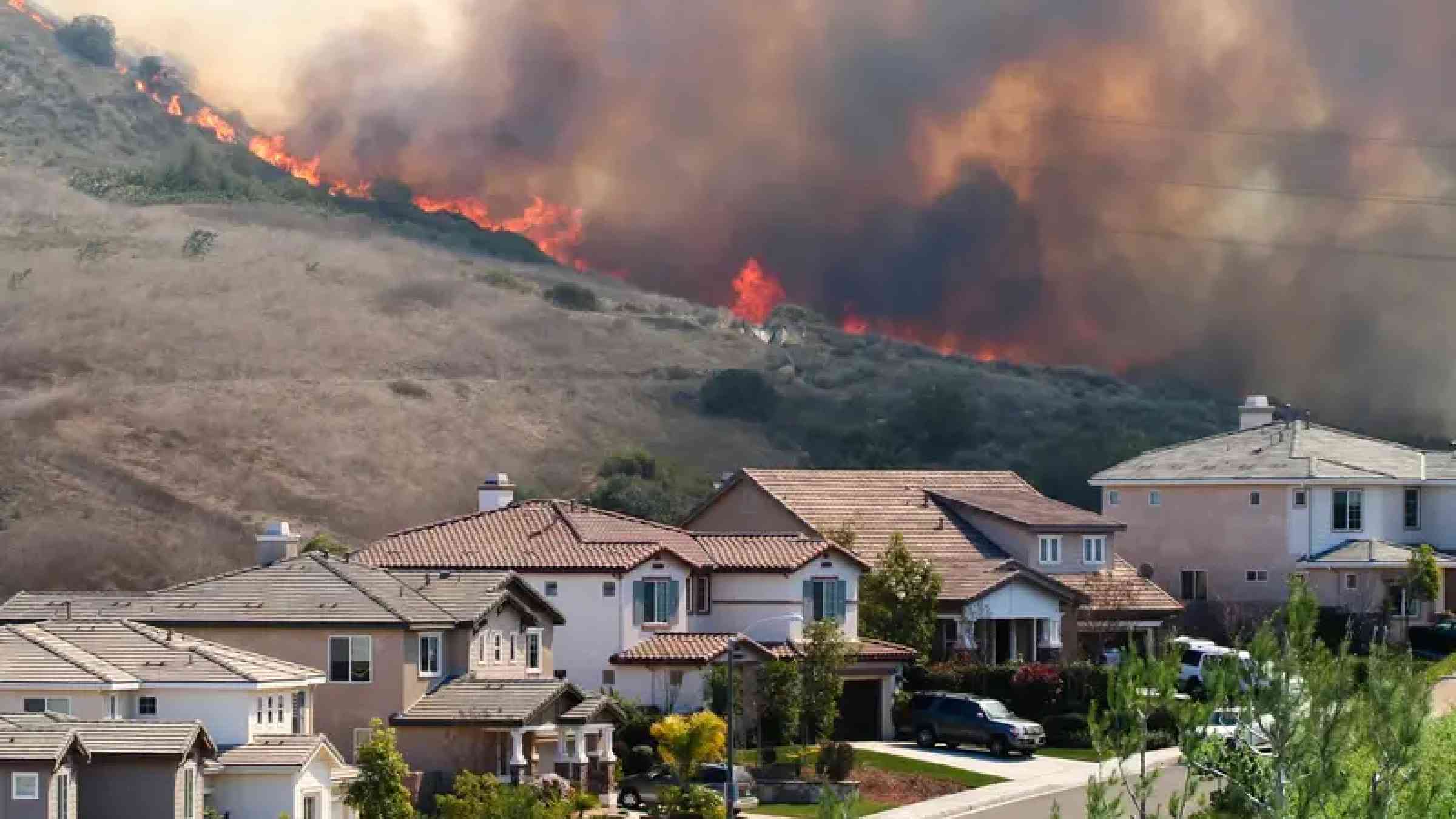Extreme wildfires are getting more extreme and occurring more often

The world’s most energetic wildfires have doubled in intensity and number over the past 2 decades, with climate change and land management likely to blame.
With near-constant reports of wildfire catastrophes in the media, it seems like extreme fires are occurring more regularly. And a recent study in Nature Ecology and Evolution confirms it—showing that intense wildfires are now twice as common as they were 2 decades ago.
Many scientists had suspected that extreme fires were getting worse, said Calum Cunningham, a pyrogeographer from the University of Tasmania who led the study. “But we’ve not had the evidence to prove this at a global scale before,” he said.
Periodic, small wildfires can help maintain healthy ecosystems by clearing dead vegetation. But extreme blazes burn hotter and more uncontrollably, causing significant damage to the environment, people’s health, and economies. Large wildfires also emit vast stores of carbon, exacerbating global warming—in turn fueling conditions for more wildfires.
“We focused on the energetically extreme fires,” Cunningham said. Global wildfire patterns are usually established by counting pixels of burned land on satellite images. But the traditional approach overlooks the most dangerous fires, he said. “The intensity of fires, particularly the extreme ones, also matters.”
“Pinpointing the extreme events meant they could tease out an important trend.”
Cunningham and his colleagues mapped the intensity of more than 30 million wildfire events (made up of clusters and individual fires) detected by NASA’s MODIS (Moderate Resolution Imaging Spectroradiometer) satellites between 2003 and 2023, homing in on the most intense burns.
Using infrared sensors, MODIS satellites can see the heat released by wildfires. “That heat energy directly relates to the amount of biomass burned and the emissions released,” explained Cunningham. “It’s essentially a measure of environmental damage.”
The researchers took daily snapshots of wildfires around the world by summing the heat energy measured within 20- × 20-kilometer (12- × 12-mile) blocks across Earth’s surface. Then they isolated which of these blocks contained the top 0.01% of wildfires according to their radiative power (about 2,900 fire events, made up of clusters and individual fires).
“The analysis is impressive,” said Virginia Iglesias, a wildfire ecologist from the University of Colorado Boulder who was not involved in the study. With long-term satellite records now available, handling the abundance of data poses a challenge, she added. “Pinpointing the extreme events meant they could tease out an important trend.”
An Exponential Rise
Cunningham said that 6 of the past 7 years experienced the highest number of extreme fires. Last year saw the most extreme fires and was also the hottest year on record.
That uptick in extreme fires fits with existing observations of worsening fire activity in specific regions, Iglesias said. In a 2022 study, Iglesias showed that wildfires had become larger and more frequent across the United States since the early 2000s.
However, the global picture of wildfire had been less clear because records that were long enough were not available. Scientists have previously shown a long-term reduction in the acreage burned by wildfires around the world. That pattern reflects changing agricultural practices (and a decline in the use of fire to clear land) in the savanna grasslands of Africa, where around 70% of the world’s burning by land area occurs.
Savanna fires typically burn at lower intensity, Cunningham said, and once those fires were filtered from the global data set, the steep rise in extreme wildfires was clear.
Cunningham and his colleagues found that the global trend was driven by a dramatic worsening of extreme wildfires in the western United States, Canada, and Russia. They noted an elevenfold increase in extreme fires in the coniferous forests of North America since 2003. High-latitude boreal forests experienced a sevenfold increase over the same period.
Fanning the Flames
“Climate change is unambiguously making the conditions required for an extreme fire more common.”
“Climate change is unambiguously making the conditions required for an extreme fire more common,” said Cunningham. The study didn’t try to make the link to climate change, but, he said, scientists have a wealth of evidence to show that hotter, drier conditions are turning landscapes into tinderboxes, making wildfires more likely and more energetic.
Iglesias said that legacies of land management are likely compounding the effects of climate change. Particularly in North America, aggressive fire suppression policies during the 20th century have allowed dead vegetation to pile up. “All that excess fuel, coupled with a drying climate, stacks the odds in favor of intense fires,” she said.
As climate change accelerates and wildfires burn with more intensity, our relationship with fire needs to change too, Cunningham said. “We’ve moved beyond a period where suppressing all fire was the objective. It’s now time to learn to live in fire-prone landscapes.” Using frequent, low-intensity fires as a tool to reduce fuel loads and mitigate against larger fires, just as Indigenous peoples have for millennia, could be one way forward.
